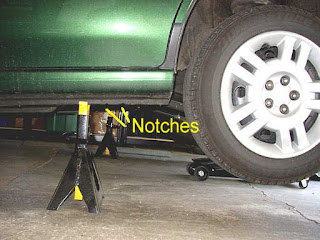
When my old Sorels died (not my current 1964's), I decided to replace them with a pair of boots that are a little more high performance. The primary difference between this boot and a pair of Sorel type pac boot is the double boot aspect. Pac boots are double boots; meaning there is an inner liner/insulating boot, and an outer waterproof shell. The Kamik Patriots are not such a boot. The insulation is built into the walls of the boot. The result is a much better fitting boot; one which I can take long hikes or snow shoe without heel slip or fear of blisters. The Thinsulate Ultra insulation provide thermal protection down to -58 degrees F. Because of this single boot design, it is difficult to dry the inside of the boot. Remember that the average foot produces a pint of sweat a day. Airing the boot out is acceptable in drying them, however prolonged wear would result in clammy boots. A forced air or heated boot dryer is good to have/use if you were to use these boots all day, everyday.
The lacing system resembles that of a hiking boot. The four sets of corrosion resistant pivoting lower eyelets provides smooth lacing action and distributes the lace tension evenly over the forefoot. The center lace lock grab the shoe lace firmly and resist slipping. The upper speed hooks cinch the upper cuff tightly and seals out snow. The length of shoe lace provided however is ridiculously long. This isn't a big deal but very annoying since you will not be replacing new laces for your new boot, and trimming them will caused frayed ends.
Other features of this boot includes an anti bacterial foot bed, to help keep these boots smelling fresh after many pints of foot sweat. A large kick tab in the rear of the boot is effective for quickly kicking off your boots after a long work or play day. This tab also doubles as a retainer for snowshoe straps or similar, however it does not work as the rear latch tab of a pair of semi automatic crampons. The boot tongue is not connected to the rest of the boot at the top lace hook portion. This is in my opinion more of a benefit than a hindrance. Since this is a tall boot, the separated tongue allows an easy entrance of your foot. If the tongue is attached it would makes it difficult to get the foot in. If the tongue connecting material is made larger, to allow for easier ingress, the material would bunch up when the boot is fully laces. Because of this tongue separation, the boot is not waterproof to the top of its 10 inch cuff. If one steps into water above the lace lock, water will seep in. For me this is acceptable. After all these are snow boots and not waders. This tongue design also helps open the boot up to allow for improved air circulation to aide in drying.
 My relationship with my Kamiks have not always been peaches and roses. When I first received my boots I noticed how stiff they were. Rather than being constructed of rubber, the lower portion of the boot appeared to be made of plastic. Squatting down would create a dramatic crease along the boot which would press onto your foot. This is the same crease that happens when you walk. With the lower section being so stiff this crease soon turned into a crack, which would let in moisture. This crack did not happen immediately but over a season of heavy use. I was very disappointed. With my recent experience with poor boot durability I was not looking forward to going through the warranty process. http://mrpulldown.blogspot.com/2009/09/trezeta-epic-boot-failure-part-ii.html
My relationship with my Kamiks have not always been peaches and roses. When I first received my boots I noticed how stiff they were. Rather than being constructed of rubber, the lower portion of the boot appeared to be made of plastic. Squatting down would create a dramatic crease along the boot which would press onto your foot. This is the same crease that happens when you walk. With the lower section being so stiff this crease soon turned into a crack, which would let in moisture. This crack did not happen immediately but over a season of heavy use. I was very disappointed. With my recent experience with poor boot durability I was not looking forward to going through the warranty process. http://mrpulldown.blogspot.com/2009/09/trezeta-epic-boot-failure-part-ii.html
To being my warranty process I e-mail Kamik's customer service. They instructed me to ship in my boots. If they found them to be defective they would replace them. I did so, and after a week received an e-mail stating that a new pair of boots were in the mail to me. After another week I received a new pair of boots. WOW that is some customer service!! They did not hassle me, ask for purchase information, they just took one look at the boot and said, "that shouldn't happen", and replaced them. My new boot, though seemingly identical, has a rubber lower portion which will resist cracking.
By doing me right, some would say that I should fully support Kamik and not mention this transgression. However I think that this is an actual plus for the company. As I have said before: all products fail. What separates a good company from a bad one is their willingness to stand behind their products, and not to let the customer pay for their mistakes. In the future I will not hesitate to purchase another Genfoot INC. product.













 Home for Thanksgiving is always so
Home for Thanksgiving is always so 



